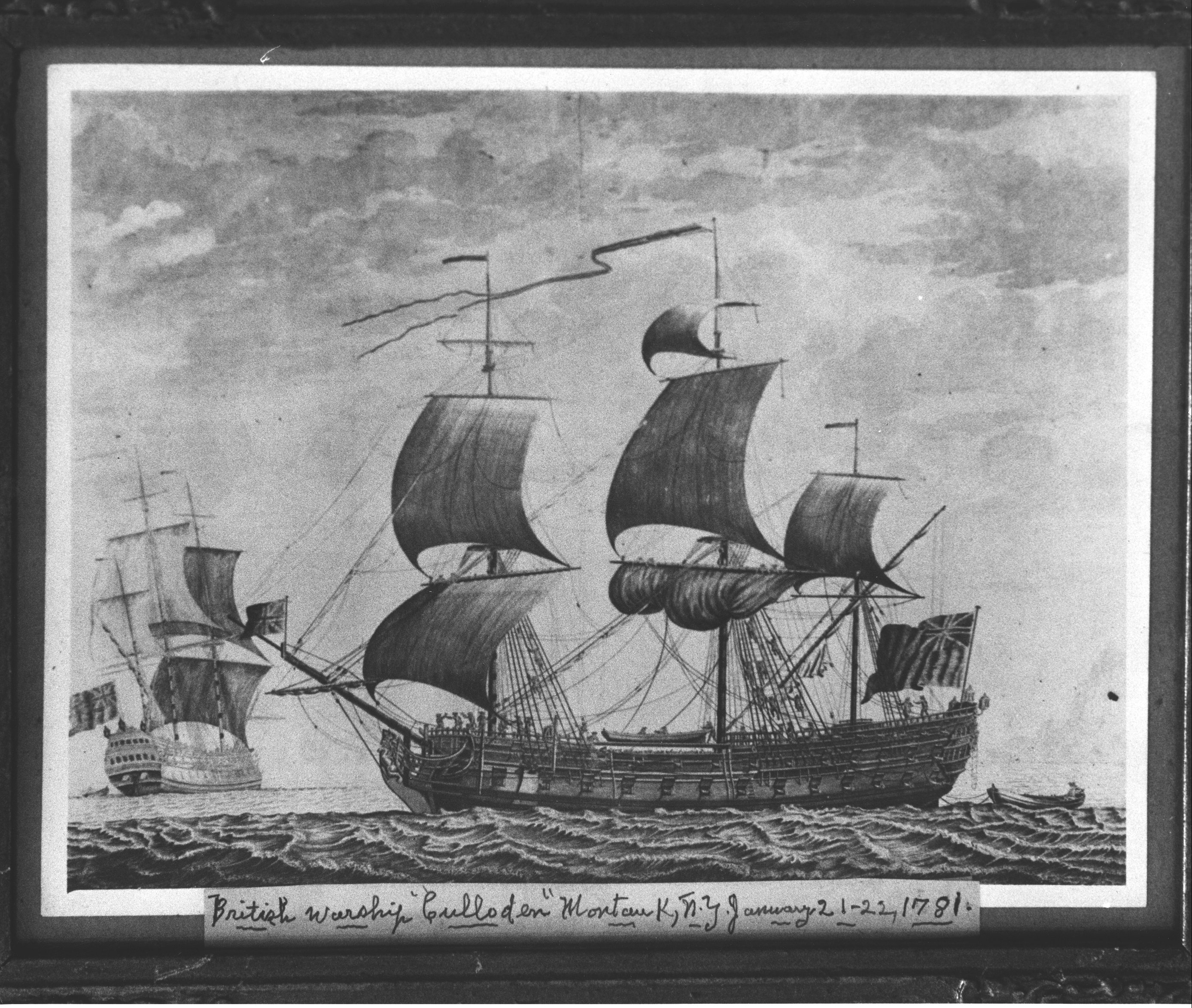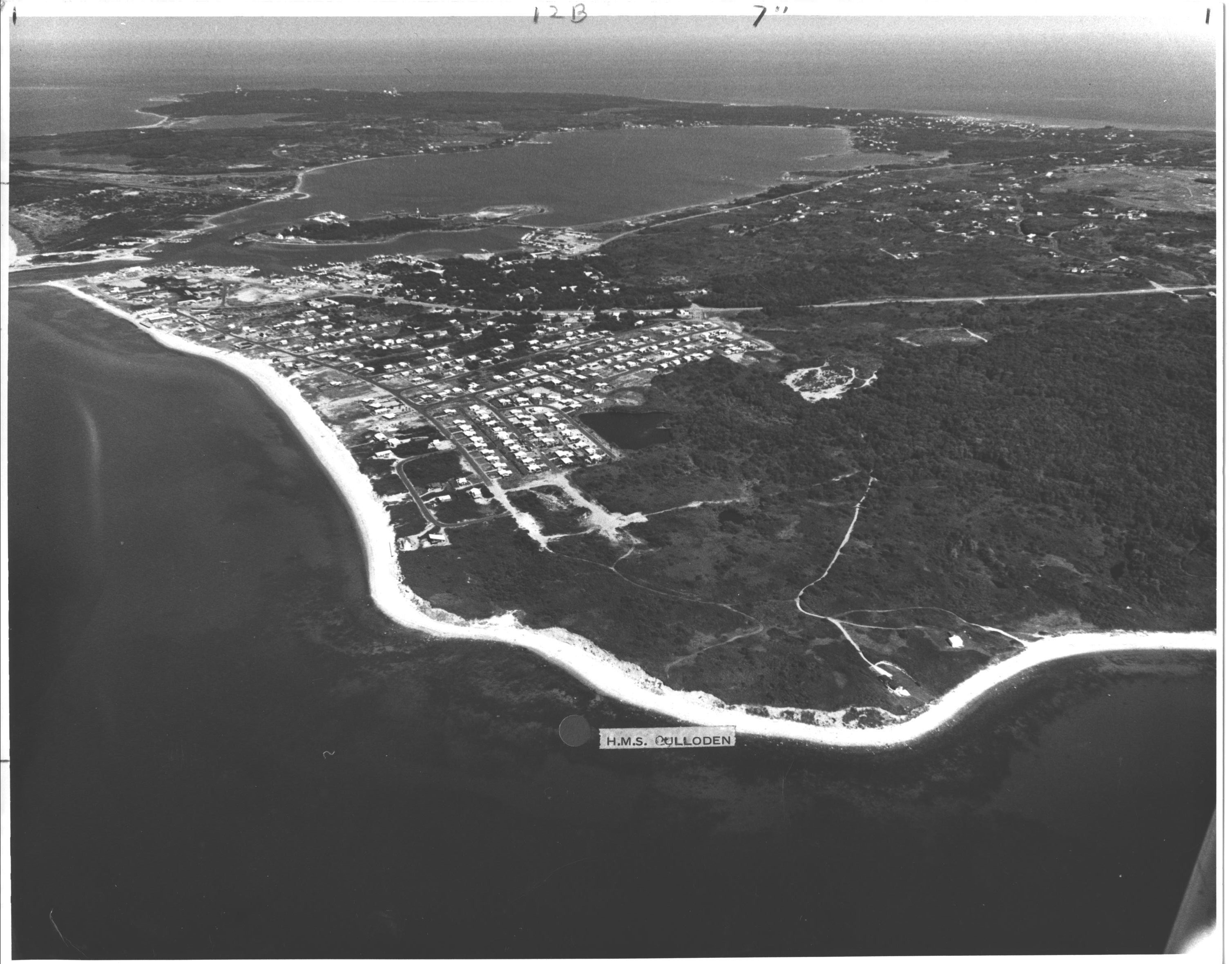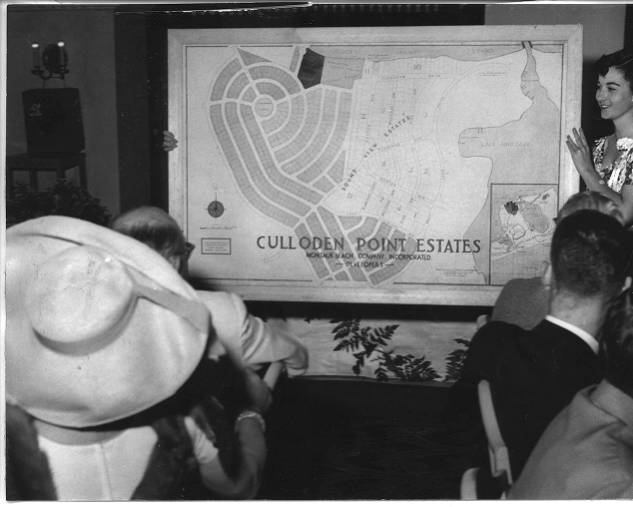


A 74-gun British warship, the H.M.S. Culloden ran aground at the northeast corner of Fort Pond Bay during a winter storm in 1781. At the time Long Island was occupied by British forces, and the Culloden had been patrolling Block Island Sound in search of French ships providing aid to Rhode Island colonists. The Culloden was one of a number of British warships anchored in Gardiner’s Bay led by the Royal Oak, the flagship of Vice Admiral Arbuthnot.
“The British naval officers and men enjoyed themselves at East Hampton and on Gardiner’s Island’” Jeannette Edwards Rattray wrote in her book Ship Ashore. “They even entertained some of the local residents at dinner parties on board the flagship, the minister, Samuel Buell, D.D., and other leading citizens feeling it was just as well to keep on friendly terms with the British forces occupying Long Island after the disastrous Battle of Long Island in 1776.” Fought in Brooklyn and by some measures the largest one of the Revolutionary War, that battle allowed the British to take over New York Harbor for the duration of the conflict.
Upon learning that three French ships were leaving Rhode Island and within chasing distance, the vice admiral sent the Culloden and three other British ships in that direction in pursuit. A snowstorm whipped up, accompanied by gale-force winds, and the Culloden, commanded by Capt. George Balfour and carrying 650 sailors, “lost part of her rudder when she first scraped bottom, either at Gin Beach or Shagwong Reef,” the East Hampton Star recounted in 1998.
“The captain managed to steer her into the calmer waters of Fort Pond Bay despite a hole in her side, but there the warship went aground again.”
The Culloden filled with water, eventually sinking only a few hundred feet from shore. All of the men made it safely to land, rowing back to salvage what they could from the ship and heaving or leaving the rest, including cannons weighing thousands of pounds. They set the ship on fire to prevent it from passing into enemy hands.
The submerged shipwreck was left largely untouched until the 1970s, when divers recovered a 6,328-pound cannon from the site. The cannon was stored at the East Hampton Town Marine Museum, and the wreck was listed on the National Register of Historic Places for protection. Culloden Point Preserve, which is owned by East Hampton Town, also commemorates the shipwreck.

Reply or Comment